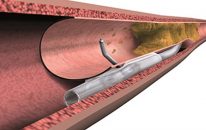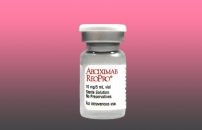The aim of this meta-analysis, which included all randomized studies carried out to date, was to compare an early invasive strategy vs. a delayed invasive strategy in patients undergoing non ST elevation myocardial infarction (NSTEMI). Even though there is no doubt invasive strategies reduce events rate such as death and re-infarction in NSTEMI patients,…
Ticagrelor vs. Prasugel: Similar Safety and Efficacy in Primary Angioplasty
No randomized head-to-head study comparing the efficacy and safety of ticagrelor and prasugrel has been carried out in the last 7 years since these newer P2Y12 inhibitors first showed a higher efficacy relative to clopidogrel. This study was designed to compare the efficacy and safety of prasugrel and ticagrelor in patients with acute myocardial infarction…
Contemporary Ventricular Assist Devices: Hemodynamic Consequences
Courtesy of Dr. Agustín Vecchia. Despite current technological advancements and improvement in reperfusion rates in a setting of infarction, cardiogenic shock still is a relatively frequent complication with a mortality rate close to 50%. The need to augment cardiac output in these patients and the fact that the popular intraaortic balloon counterpulsation has not been able to…
Residual Thrombus After Aspiration Thrombectomy: Does It Affect the Outcome of Primary Angioplasty?
The aim of this study was to evaluate if the residual thrombus burden after aspiration thrombectomy may affect the outcome of primary angioplasty in patients with acute coronary syndrome with ST-segment elevation. The most recent studies on aspiration thrombectomy failed to show clinical benefit in patients with ST-segment elevation. This study is based on…
Cardiovascular Events Reduction: Bivalirudin or Heparin?
The MATRIX study did not find a clear advantage of bivalirudin over unfractioned heparin to reduce major adverse cardiovascular events (MACE) or net cardiovascular adverse events (NCAE) in patients undergoing acute coronary syndrome receiving PCI. This new analyzis confirms there is no difference in ischemic and thrombotic events in patients with acute coronary syndrome…
Rechanneling a CTO in a Non-Infarct-Related Artery After Primary PCI: Yes or No?
Between 10% and 15% of patients admitted with ST-segment elevation myocardial infarction present concurrent coronary chronic total occlusion (CTO) in a non-infarct-related artery, which is associated with increased morbidity and mortality. The EXPLORE (Evaluating Xience and Left Ventricular Function in Percutaneous Coronary Intervention on Occlusions After ST-Elevation Myocardial Infarction) trial evaluated whether patients admitted…
ACS and Multivessel Disease: How to proceed
Gentileza del Dr. Javier Castro In the daily practice, a high percentage of ST elevation myocardial infarction patients (STEMI) present multivessel disease (40-65%). This group of patients presents worse clinical evolution and higher mortality than patients with one culprit lesion. When PCI is indicated to a patient with significant lesions in more than…
Are Pharmacoinvasive Strategy and Primary PCI Comparable?
The Strategic Reperfusion Early After Myocardial Infarction trial and the French Registry of Acute Myocardial Infarction 2015 suggest that pharmacoinvasive strategy compares favorably with primary percutaneous coronary intervention (PCI). This study compared the impact of pharmacoinvasive strategy with the impact of primary angioplasty in real-world patients admitted with acute coronary syndrome with ST-segment elevation. The…
Deferring Lesions by FFR in ACS: Yes or No?
Deferring treatment through angioplasty in non-ischemic lesions by fractional flow reserve (FFR) is associated with excellent long-term prognosis in patients with chronic ischemic heart disease. FFR is beginning to be used for clinical decision-making in patients with acute coronary syndromes, and its long-term effect on stable chronic patients has not been established. This…
Intracoronary Abciximab reduces events in diabetics during PPCI
Diabetic patients have an increased risk of future cardiovascular events after an ST elevation MI. Administration of an intracoronary abciximab bolus during primary PCI could be beneficial for this high risk subgroup of patients. This study reports one year clinical outcomes and CMR imaging of patients randomized to intracoronary vs. intravenous abciximab during primary…
Closure Devices vs. Manual Compression
Courtesy of Dr. Guillermo Migliaro. Post PCI major bleeding has been associated with short term mortality in acute coronary syndromes (ACS). Even though studies have shown the transradial approach is safer than the femoral, especially in high risk subgroups ─ mainly STEMI patients ─ the femoral access site continues to be widely used. …









